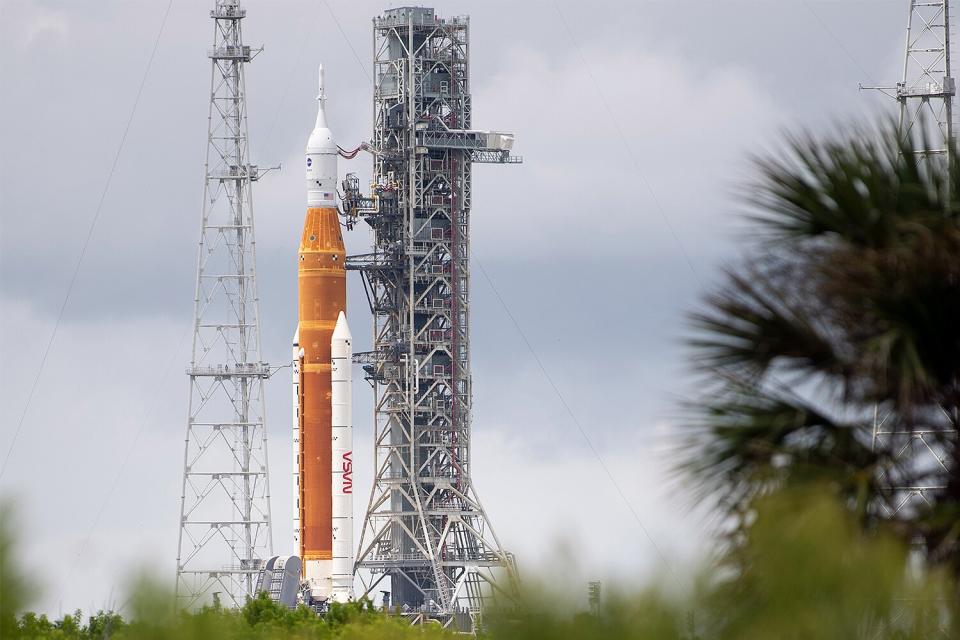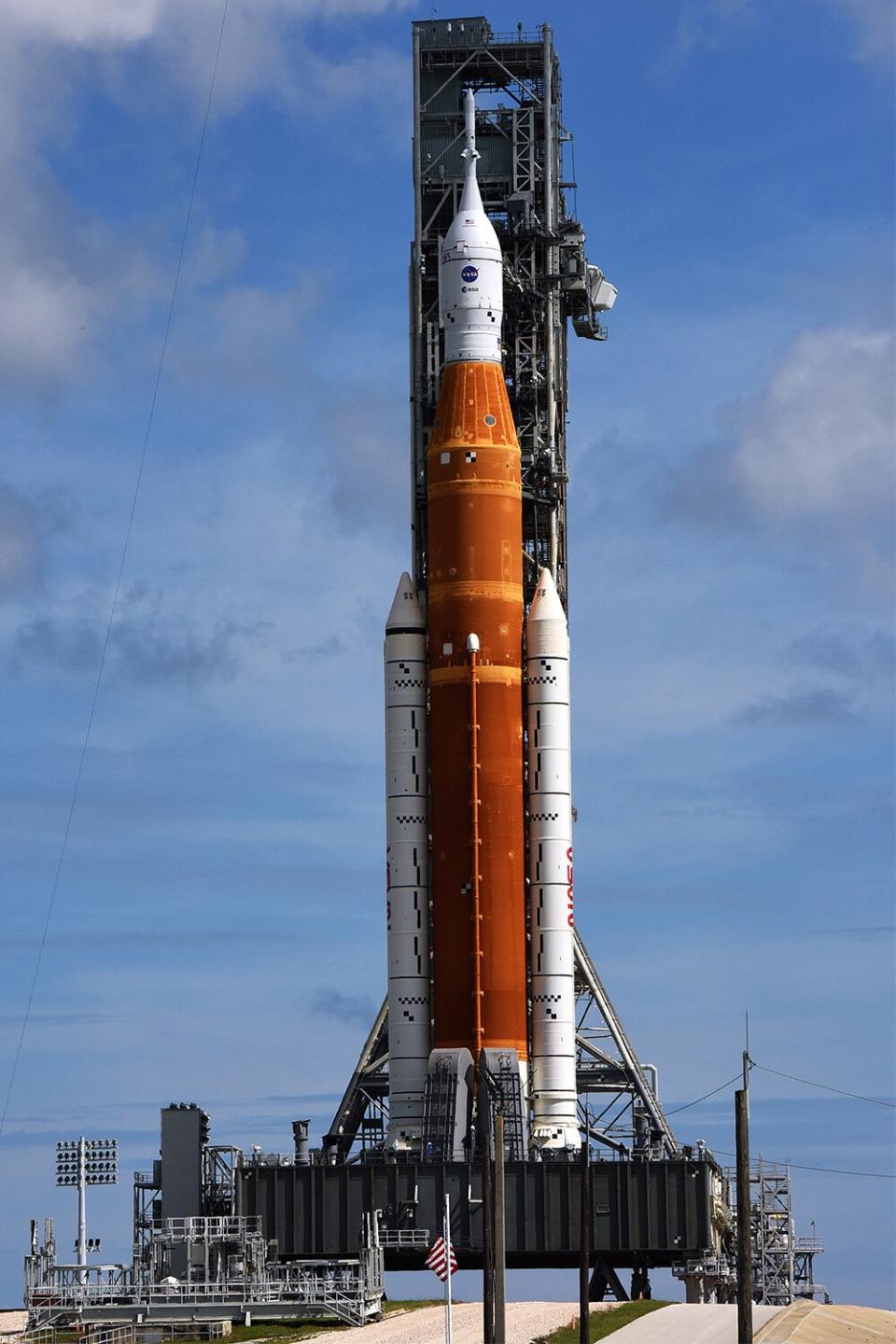NASA Scrubs Planned Launch for Artemis I Mission to the Moon Due to Engine Issue

- Oops!Something went wrong.Please try again later.
NASA's latest space mission will have to wait for another day.
The agency's launch director halted its planned launch of the Artemis I rocket — the most powerful rocket the space agency has ever built — at 8:34 a.m. Eastern time Monday, citing an unsuccessful bleed test in a news release issued just before 9 a.m.
"The Space Launch System rocket and Orion spacecraft remain in a safe and stable configuration," NASA's news release reads. "Launch controllers were continuing to evaluate why a bleed test to get the RS-25 engines on the bottom of the core stage to the proper temperature range for liftoff was not successful, and ran out of time in the two-hour launch window. Engineers are continuing to gather additional data."
One of the rocket's four engines was experiencing an issue with an engine bleed prior to the launch's postponement, according to CNN.
"We don't launch until it's right," NASA administrator Bill Nelson said in a livestream shared on NASA's Twitter page Monday. "It's just illustrative that this is a very complicated machine, a very complicated system, and all of those things have to work. You don't want to light the candle until it's ready to go."
RELATED: All About NASA's Artemis I Mission
Nelson, 79, cited his own experience with launch postponements when he traveled into space on the space shuttle Columbia in 1986 during his time as a member of Congress as an example of how last-minute scrubs can lead to successful missions.
"We scrubbed four times on the pad, and the fifth try was a flawless mission," Nelson said. "We know had we launched on any one of those scrubs it wouldn't have been a good day."

Joel Kowsky/NASA via Getty
Nelson said in Monday's livestream that Vice President Kamala Harris, who chairs the National Space Council, was fully briefed on the situation as she visited Florida for the planned launch.
"She's very happy to be here. She is an enthusiastic space booster, as is President Biden," Nelson said. This whole thing will make our country proud."
Never miss a story — sign up for PEOPLE's free daily newsletter to stay up-to-date on the best of what PEOPLE has to offer, from juicy celebrity news to compelling human interest stories.
Although the next launch availability for Artemis I will be on Friday, Nelson said that it's unclear whether that time period will be used for a new attempt. In the meantime, engineers continue to gather data, according to NASA.
If the rocket launches during its two-hour window scheduled for Friday, its mission will last 42 days and return on Oct. 11, according to CNN. If not, the next launch window is scheduled for 90 minutes on Monday, Sept. 5, which would result in a return on Oct. 17.

Paul Hennessy/Anadolu Agency via Getty
Titled the Space Launch System, the vehicle is the most powerful rocket the space agency has ever built. The upcoming Artemis mission will signify its first launch since NASA began its development in 2011.
But that's not the only vehicle headed out of this world at the end of this month. The Orion, a partially reusable crewed spacecraft, will accompany the uncrewed SLS rocket on the monumental journey.
While the rocket will whiz out 280,000 miles from Earth and thousands of miles past the moon over the course of roughly three weeks, the Orion will remain in space for a duration "longer than any ship for astronauts has done without docking to a space station and return home faster and hotter than ever before," per NASA.
RELATED: NASA Offers to Fly Your Name Around the Moon on Upcoming Artemis I Mission
The purpose of the Artemis mission is to pave the way for a long-term, sustainable lunar presence — while also serving as a foundation to eventually send astronauts to Mars, in addition to the moon. The Artemis I mission is the first in NASA's series of "increasingly complex" trips into space and around the moon. The flight test will be uncrewed and serve as a steppingstone for future human space exploration.
Furthermore, the mission strives to "demonstrate [NASA's] commitment and capability to extend human existence to the Moon and beyond," per the space agency.

